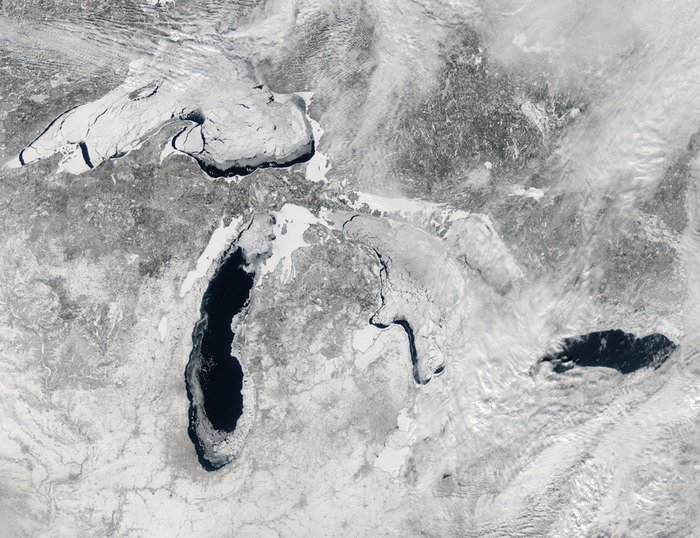This image, acquired by the Moderate Resolution Imaging Spectroradiometer (MODIS) on NASA's Aqua satellite, shows the Great Lakes on February 19, when ice covered 80.3 percent of the lakes. Credit: Jeff Schmaltz, LANCE/EOSDIS MODIS Rapid Response Team, NASA
GREENBELT, Md., Feb. 28 (UPI) -- NASA says a satellite has provided dramatic visual evidence of the extent of freezing in the Great Lakes, with ice coverage at its greatest since 1994.
A true-color image from the Moderate Resolution Imaging Spectroradiometer (MODIS) on NASA's Aqua satellite shows the mostly frozen state of the Great Lakes on Feb. 19 when ice covered 80.3 percent of the lakes, the space agency reported Friday.
The ice reached an even greater extent Feb. 13, when it covered about 88 percent of the lakes, coverage not achieved since 1994 when ice spanned over 90 percent, NASA scientists said.
Persistent cold temperatures in the region through the winter removed heat from lake waters until it reached the freezing point, they said.
"Persistently low temperatures across the Great Lakes region are responsible for the increased areal coverage of the ice," said Nathan Kurtz, cryospheric scientist NASA's Goddard Space Flight Center in Greenbelt, Md. "Low temperatures are also the dominant mechanism for thickening the ice, while secondary factors like clouds, snow, and wind also play a role."
The harsh season this year "is a reminder that winters are variable and that weather can always throw an outlier our way," said Gavin Schmidt, a climatologist and climate modeler at NASA's Goddard Institute for Space Studies in New York.
It remains to be seen when the Great Lakes will once again freeze to the extent reached in 2014, scientists said.
The harsh season this year "is a reminder that winters are variable and that weather can always throw an outlier our way," said Gavin Schmidt, a climatologist and climate modeler at NASA's Goddard Institute for Space Studies in New York.















